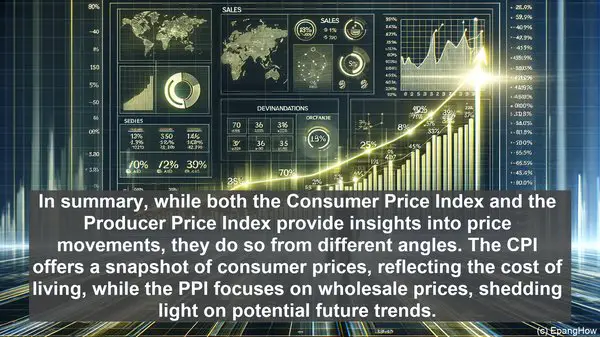Introduction: The World of Economic Indices
Hello everyone, and welcome to today’s article! In the realm of economics, various indices play a crucial role in assessing the state of the economy. Two such indices are the Consumer Price Index (CPI) and the Producer Price Index (PPI). While they may sound similar, they serve distinct purposes and provide unique insights. So, let’s dive in and explore the differences between the CPI and the PPI!

The Consumer Price Index (CPI): A Measure of Inflation
The Consumer Price Index, or CPI, is a widely recognized measure of inflation. It tracks the average price changes of a basket of goods and services commonly purchased by households over time. By monitoring the CPI, economists and policymakers gain insights into the cost of living and the purchasing power of consumers. This information is vital for making informed decisions related to wages, benefits, and social security adjustments.
The Producer Price Index (PPI): A Look into Wholesale Prices
While the CPI focuses on the prices paid by consumers, the Producer Price Index, or PPI, provides a different perspective. It measures the average changes in prices received by domestic producers for their output. In other words, the PPI tracks wholesale prices. By monitoring the PPI, economists can gauge the cost pressures faced by producers, which can have implications for consumer prices down the line. It serves as an early indicator of potential inflationary trends.

Different Components, Different Weights
Another key distinction between the CPI and the PPI lies in their composition. The CPI includes a broad range of goods and services, covering everything from food and housing to healthcare and transportation. On the other hand, the PPI focuses primarily on goods, with less emphasis on services. Additionally, the weights assigned to different components in the indices vary. For example, the CPI places significant importance on housing, reflecting its significance in household budgets.
Frequency and Timeliness
The CPI and the PPI also differ in terms of their release frequency and timeliness. The CPI is typically released on a monthly basis, with a slight lag. This allows for a relatively quick assessment of changes in consumer prices. In contrast, the PPI is released more frequently, often on a weekly or quarterly basis, depending on the specific category. This timeliness makes the PPI a valuable tool for businesses and policymakers in monitoring price trends.
